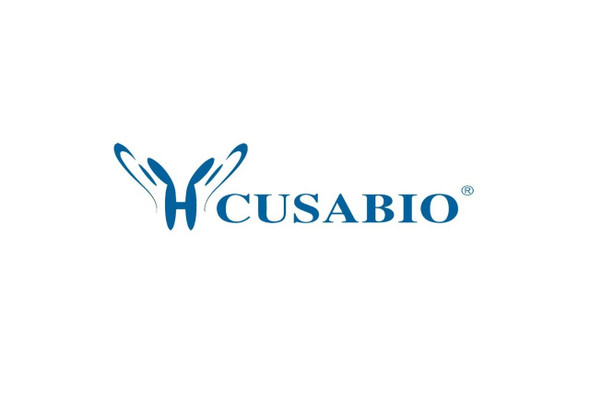Cusabio Human Recombinants
Recombinant Human Baculoviral IAP repeat-containing protein 5 (BIRC5) | CSB-EP002706HU
- SKU:
- CSB-EP002706HU
- Availability:
- 3 - 7 Working Days
Description
Recombinant Human Baculoviral IAP repeat-containing protein 5 (BIRC5) | CSB-EP002706HU | Cusabio
Alternative Name(s): Apoptosis inhibitor 4 Apoptosis inhibitor survivin
Gene Names: BIRC5
Research Areas: Cell Biology
Organism: Homo sapiens (Human)
AA Sequence: MGAPTLPPAWQPFLKDHRISTFKNWPFLEGCACTPERMAEAGFIHCPTENEPDLAQCFFCFKELEGWEPDDDPIEEHKKHSSGCAFLSVKKQFEELTLGEFLKLDRERAKNKIAKETNNKKKEFEETAKKVRRAIEQLAAMD
Source: E.coli
Tag Info: N-terminal 6xHis-SUMO-tagged
Expression Region: 1-142aa
Sequence Info: Full Length
MW: 32.5 kDa
Purity: Greater than 90% as determined by SDS-PAGE.
Relevance: Multitasking protein that has dual roles in promoting cell proliferation and preventing apoptosis. Component of a chromosome passage protein complex (CPC) which is essential for chromosome alignment and segregation during mitosis and cytokinesis. Acts as an important regulator of the localization of this complex; directs CPC movement to different locations from the inner centromere during prometaphase to midbody during cytokinesis and participates in the organization of the center spindle by associating with polymerized microtubules. The complex with RAN plays a role in mitotic spindle formation by serving as a physical scaffold to help deliver the RAN effector molecule TPX2 to microtubules. May counteract a default induction of apoptosis in G2/M phase. The acetylated form represses STAT3 transactivation of target gene promoters. May play a role in neoplasia. Inhibitor of CASP3 and CASP7. Isoform 2 and isoform 3 do not appear to play vital roles in mitosis. Isoform 3 shows a marked reduction in its anti-apoptotic effects when compared with the displayed wild-type isoform.
Reference: "A novel anti-apoptosis gene, survivin, expressed in cancer and lymphoma." Ambrosini G., Adida C., Altieri D.C. Nat. Med. 3:917-921(1997)
Storage: The shelf life is related to many factors, storage state, buffer ingredients, storage temperature and the stability of the protein itself. Generally, the shelf life of liquid form is 6 months at -20?/-80?. The shelf life of lyophilized form is 12 months at -20?/-80?.
Notes: Repeated freezing and thawing is not recommended. Store working aliquots at 4? for up to one week.
Function: Multitasking protein that has dual roles in promoting cell proliferation and preventing apoptosis
Involvement in disease:
Subcellular Location: Cytoplasm, Nucleus, Chromosome, Chromosome, centromere, Cytoplasm, cytoskeleton, spindle, Chromosome, centromere, kinetochore, Midbody
Protein Families: IAP family
Tissue Specificity: Expressed only in fetal kidney and liver, and to lesser extent, lung and brain (PubMed:10626797). Abundantly expressed in adenocarcinoma (lung, pancreas, colon, breast, and prostate) and in high-grade lymphomas (PubMed:14741722, PubMed:16329164). Also expressed in various renal cell carcinoma cell lines (PubMed:10626797). Expressed in cochlea including the organ of Corti, the lateral wall, the interdental cells of the Limbus as well as in Schwann cells and cells of the cochlear nerve and the spiral ganglions (at protein level). Not expressed in cells of the inner and outer sulcus or the Reissner's membrane (at protein level) (PubMed:21364656, PubMed:20627126).
Paythway: Hipposignalingpathway
Form: Liquid or Lyophilized powder
Buffer: If the delivery form is liquid, the default storage buffer is Tris/PBS-based buffer, 5%-50% glycerol. If the delivery form is lyophilized powder, the buffer before lyophilization is Tris/PBS-based buffer, 6% Trehalose, pH 8.0.
Reconstitution: We recommend that this vial be briefly centrifuged prior to opening to bring the contents to the bottom. Please reconstitute protein in deionized sterile water to a concentration of 0.1-1.0 mg/mL.We recommend to add 5-50% of glycerol (final concentration) and aliquot for long-term storage at -20?/-80?. Our default final concentration of glycerol is 50%. Customers could use it as reference.
Uniprot ID: O15392
HGNC Database Link: HGNC
UniGene Database Link: UniGene
KEGG Database Link: KEGG
STRING Database Link: N/A
OMIM Database Link: OMIM










